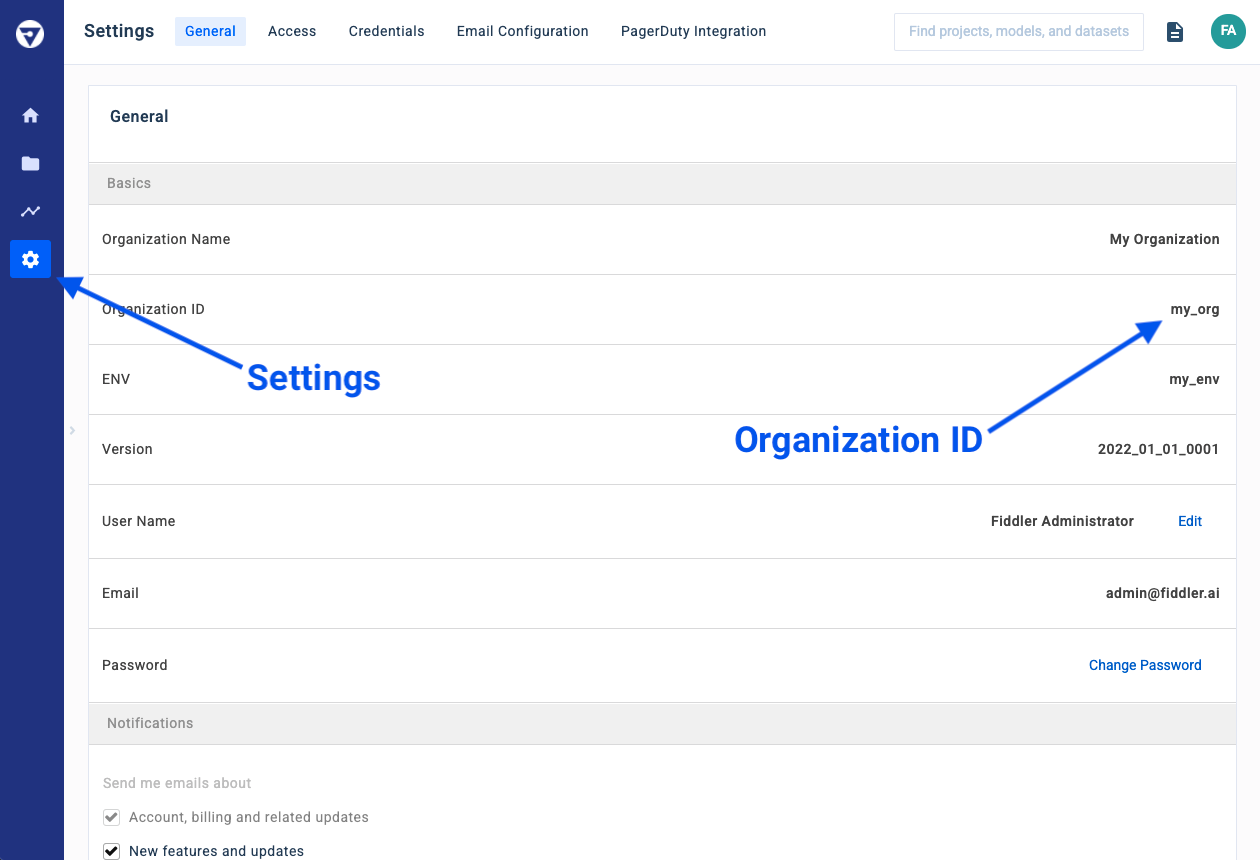Authorizing the Client
In order to use the client, you’ll need to provide some authorization details.
Specifically, there are three pieces of information that are required:
- The URL you are connecting to
- Your organization ID
- An authorization token for your user
This information can be provided in two ways:
- As arguments to the client when it's instantiated (see
fdl.FiddlerApi) - In a configuration file (see
fiddler.ini)
Finding your URL
The URL should point to wherever Fiddler has been deployed for your organization.
If using Fiddler’s managed cloud service, it should be of the form
https://app.fiddler.ai
Finding your organization ID
To find your organization ID, navigate to the Settings page. Your organization ID will be immediately available on the General tab.

Finding your authorization token
To find your authorization token, first navigate to the Settings page. Then click Credentials and Create Key.

Connecting the Client
Once you've located the URL, the org_id and the authorization token, you can connect the Fiddler client to your environment.
URL = 'https://app.fiddler.ai'
ORG_ID = 'my_org'
AUTH_TOKEN = '9AYWiqwxe2hnCAePxg-uEWJUDYRZIZKBSBpx0TvItnw' # not a valid token
# Connect to the Fiddler client
client = fdl.FiddlerApi(
url=URL,
org_id=ORG_ID,
auth_token=AUTH_TOKEN
)
Authorizing via configuration file
If you would prefer not to send authorization details as arguments to fdl.FiddlerApi, you can specify them in a configuration file called fiddler.ini.
The file should be located in the same directory as the script or notebook that initializes the fdl.FiddlerApi object.
The syntax should follow the below example:
[FIDDLER]
url = https://app.fiddler.ai
org_id = my_org
auth_token = xtu4g_lReHyEisNg23xJ8IEex0YZEZeeEbTwAsupT0U
Then you can initialize the fdl.FiddlerApiobject without any arguments, and Fiddler will automatically detect the fiddler.ini file:
client = fdl.FiddlerApi()
Updated 4 months ago
